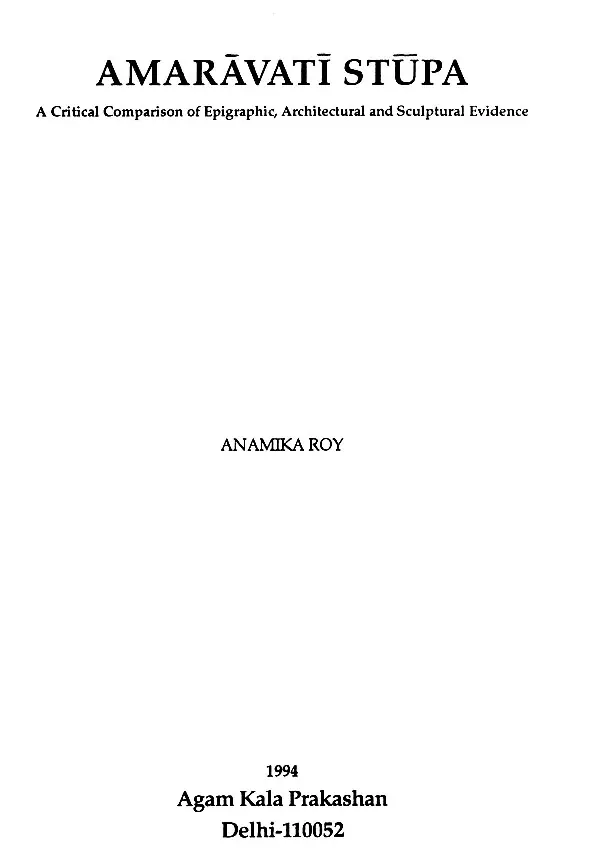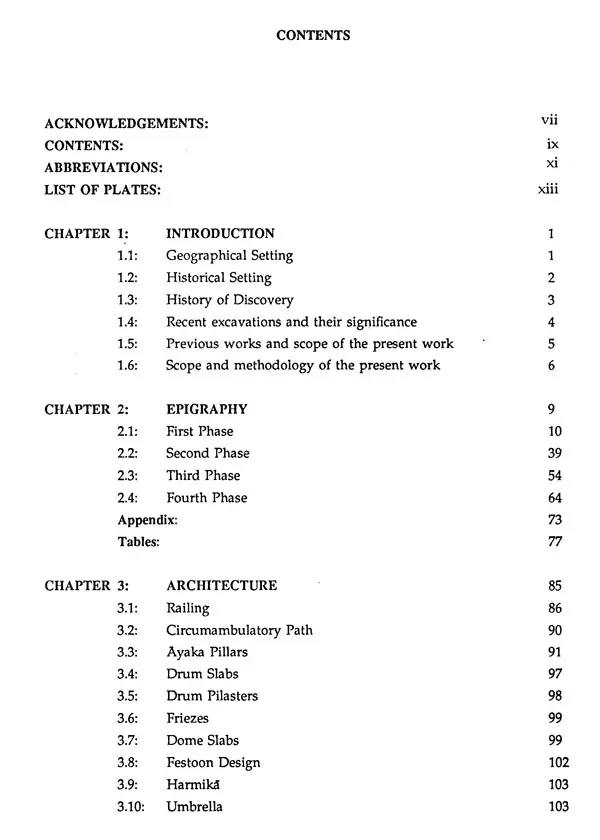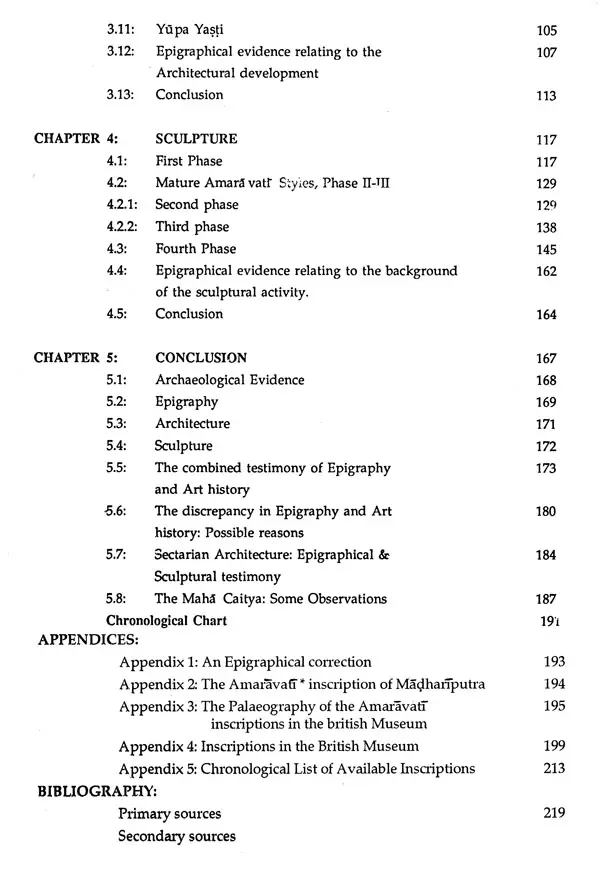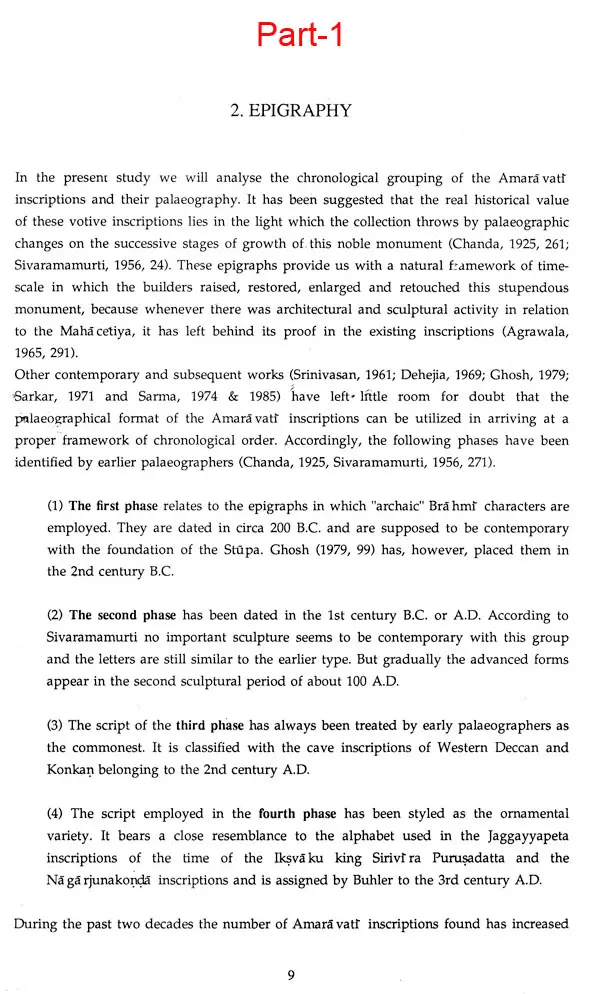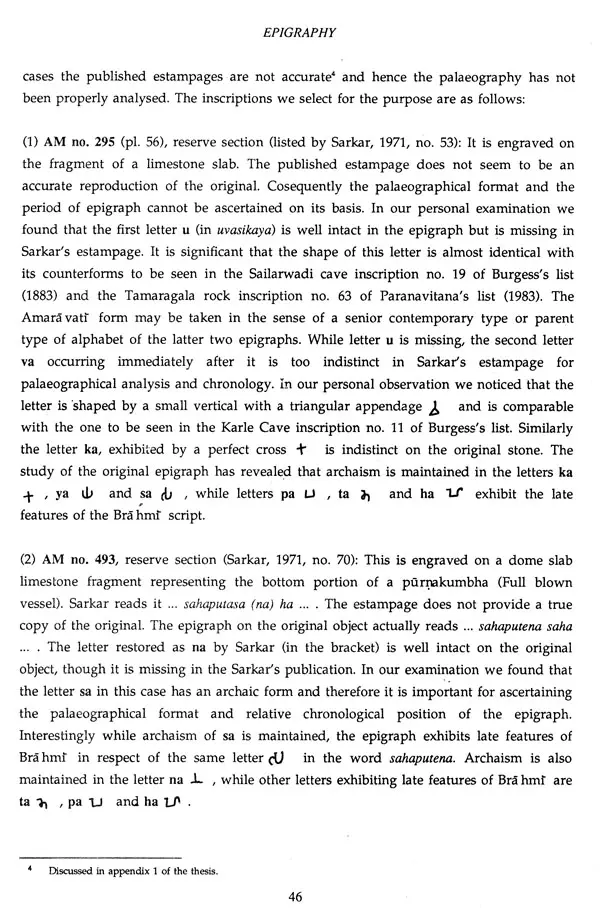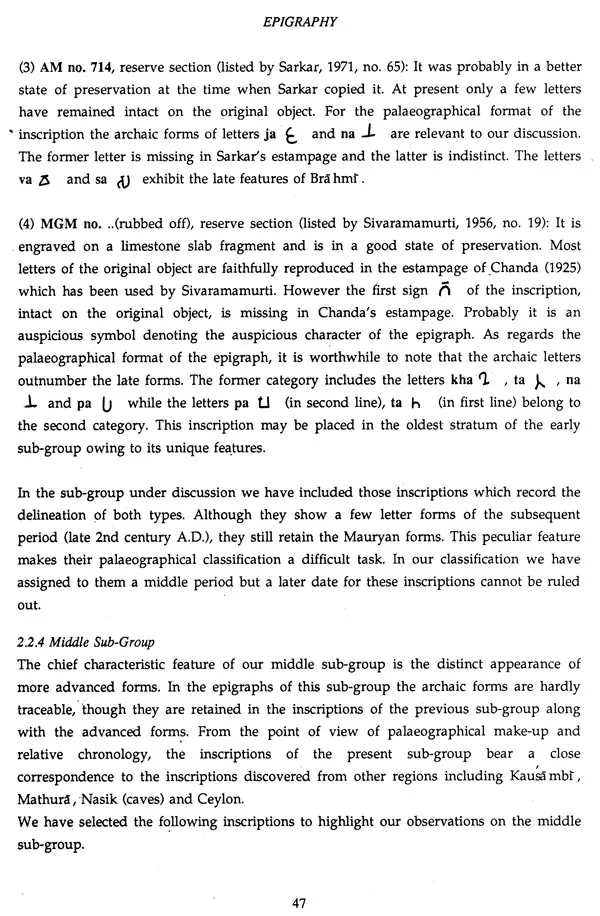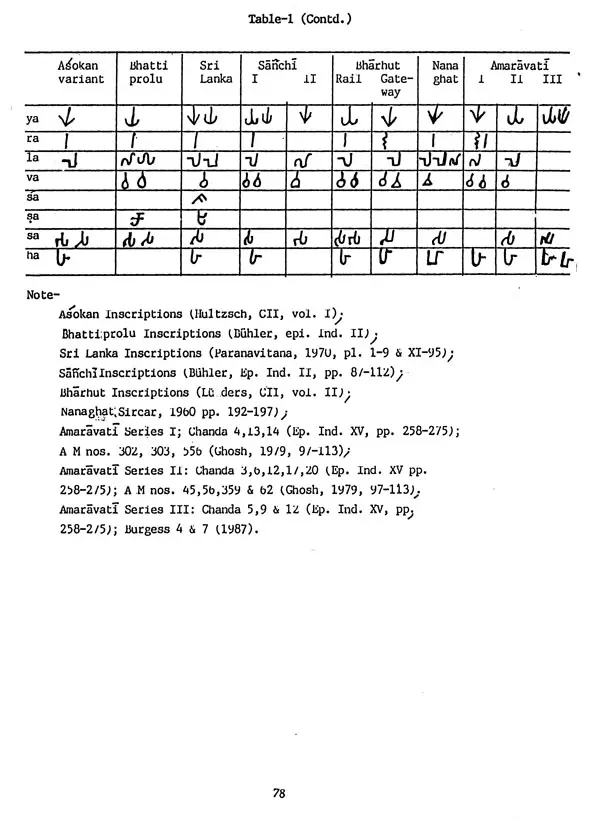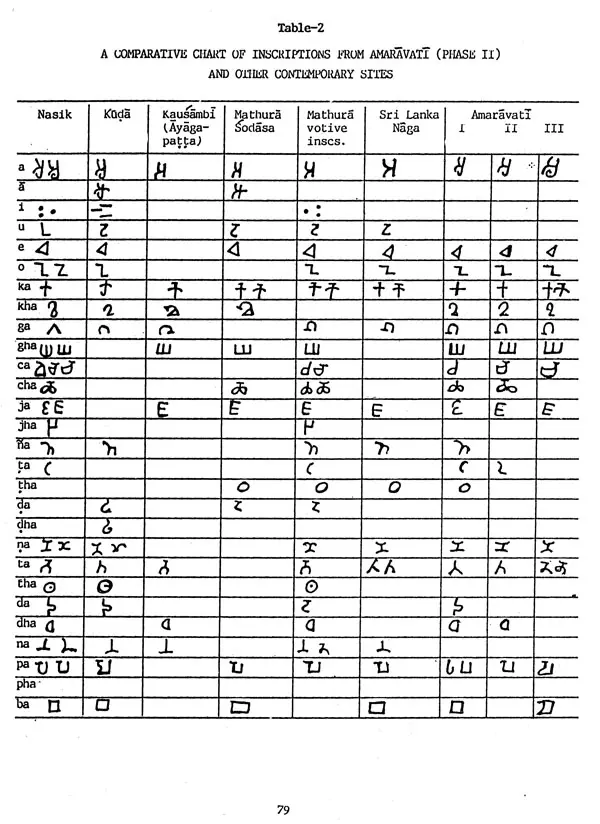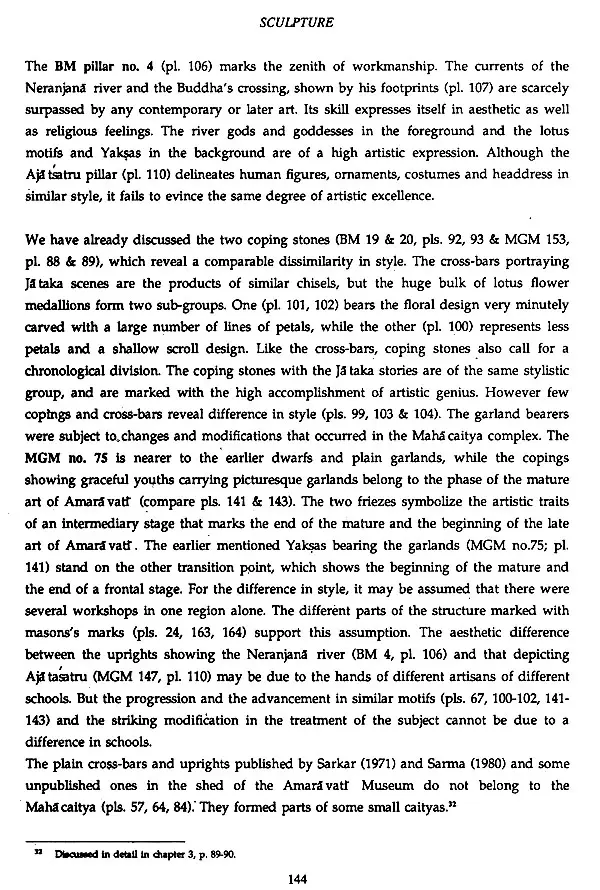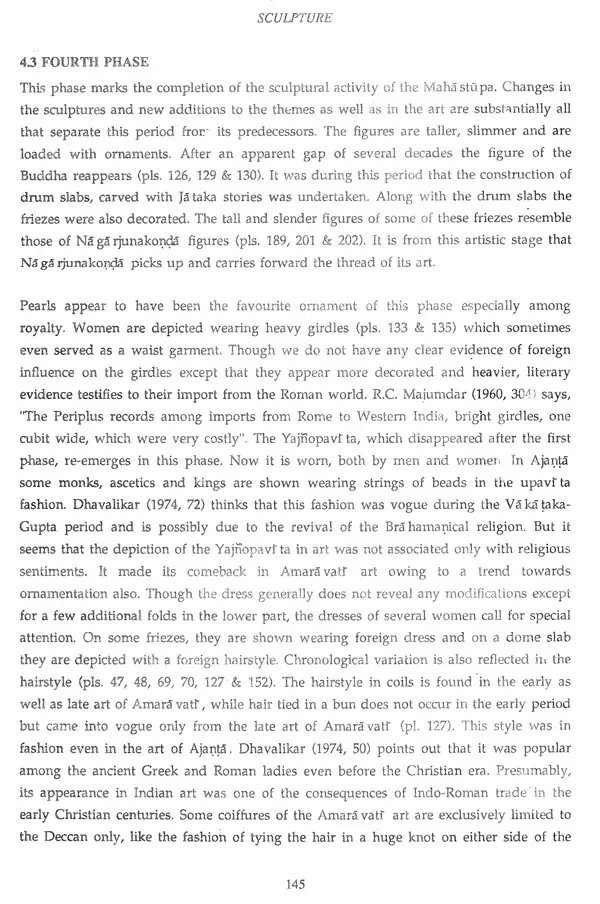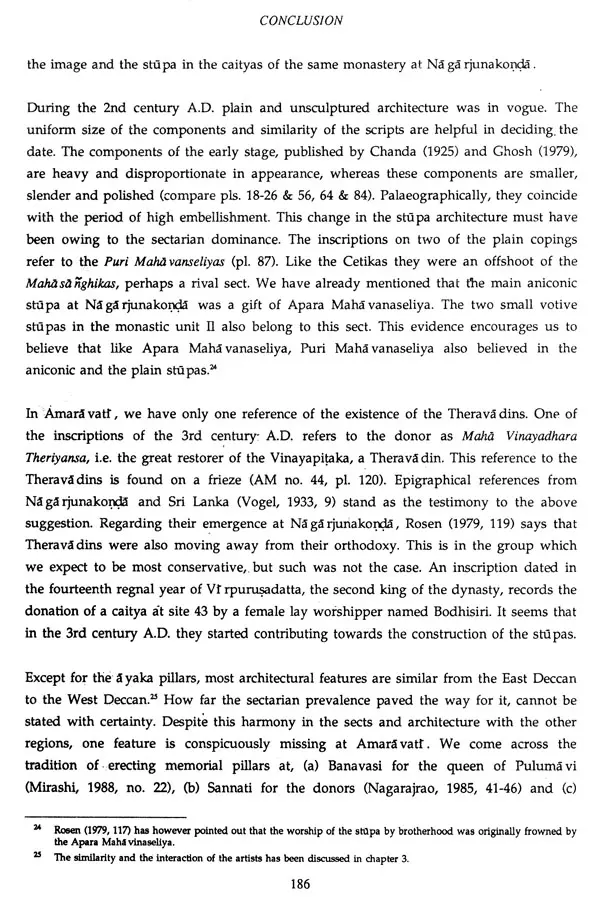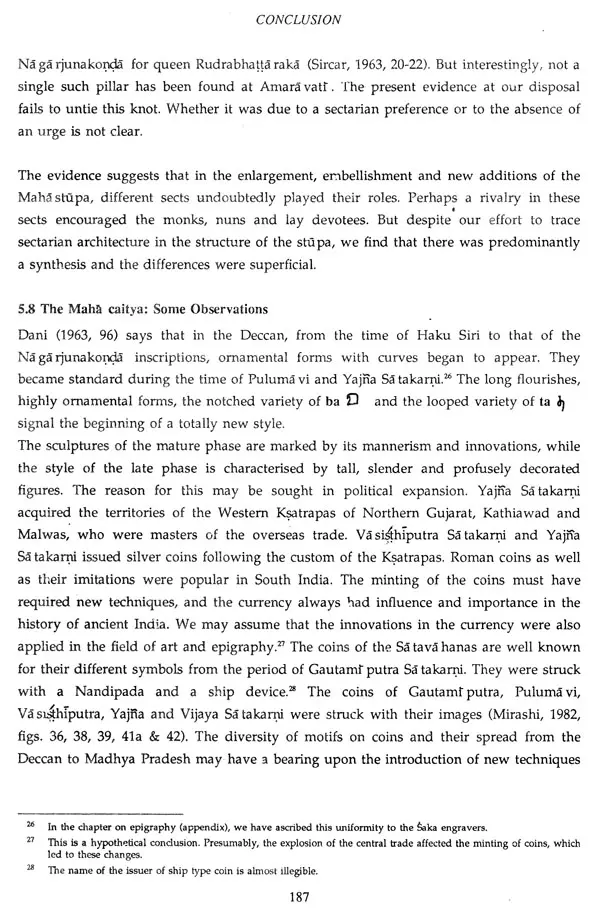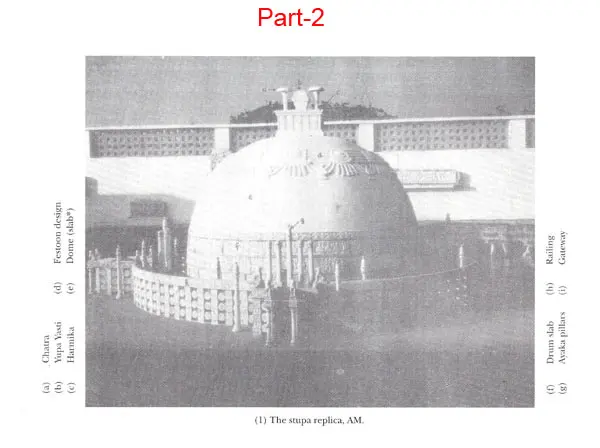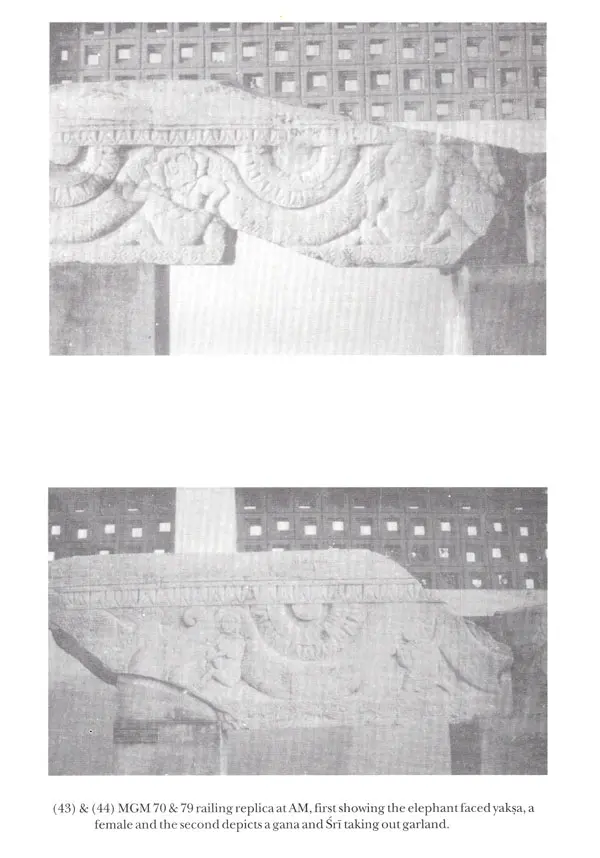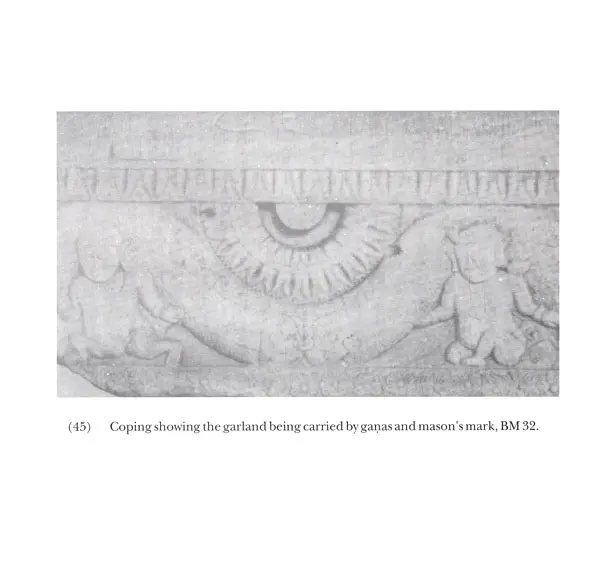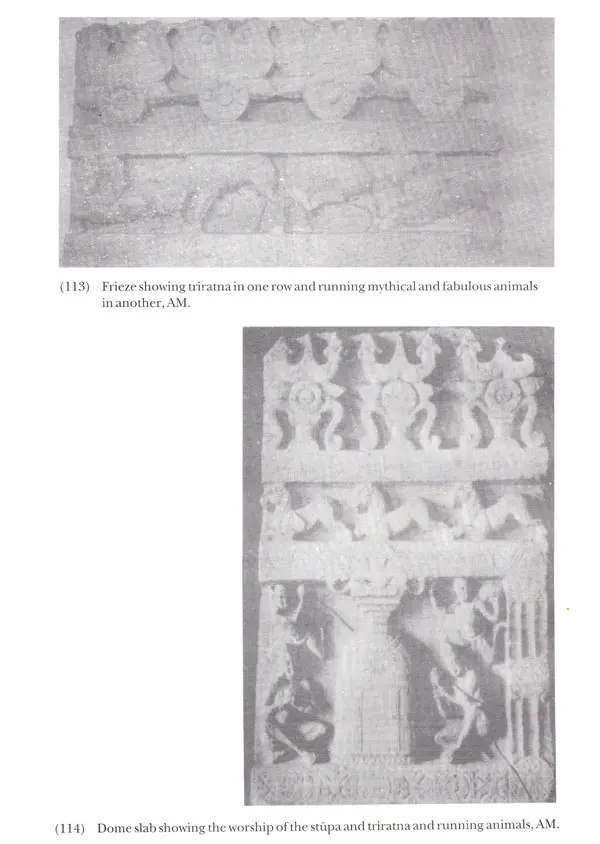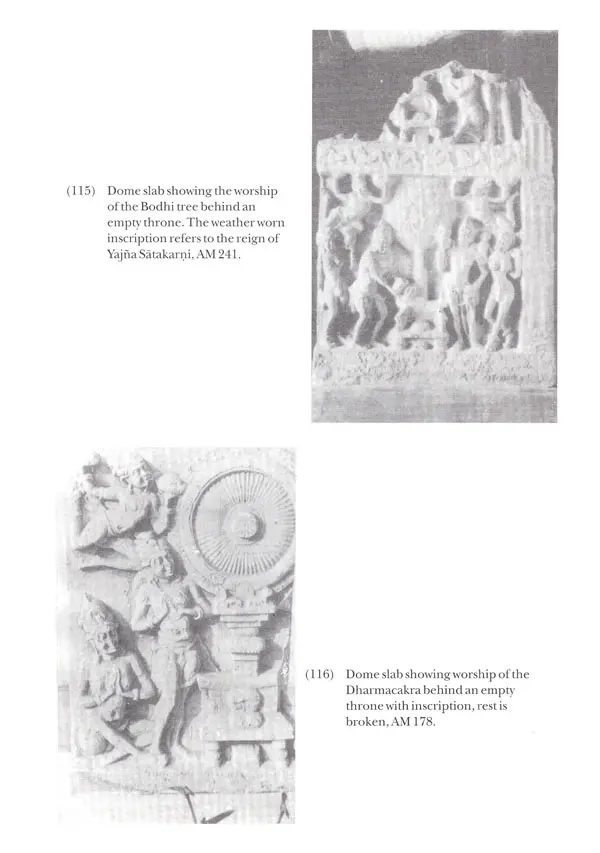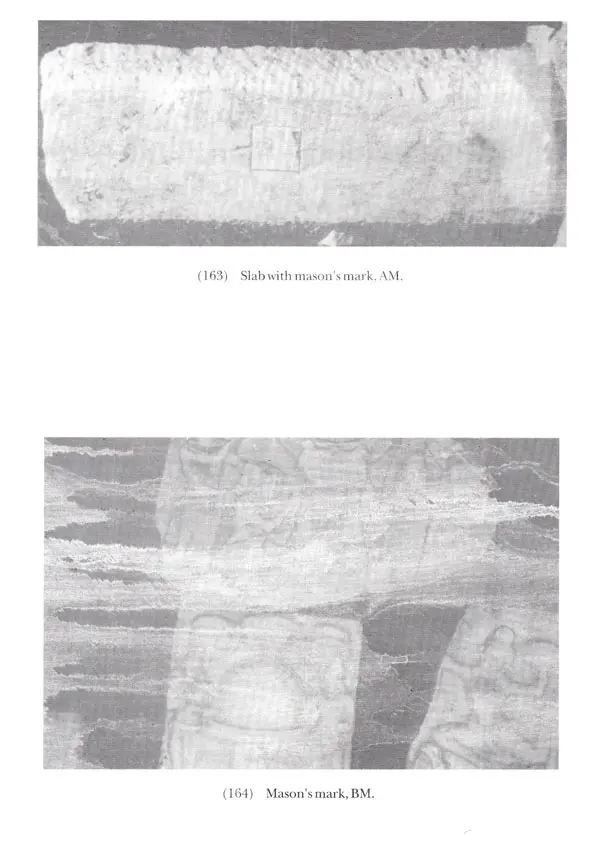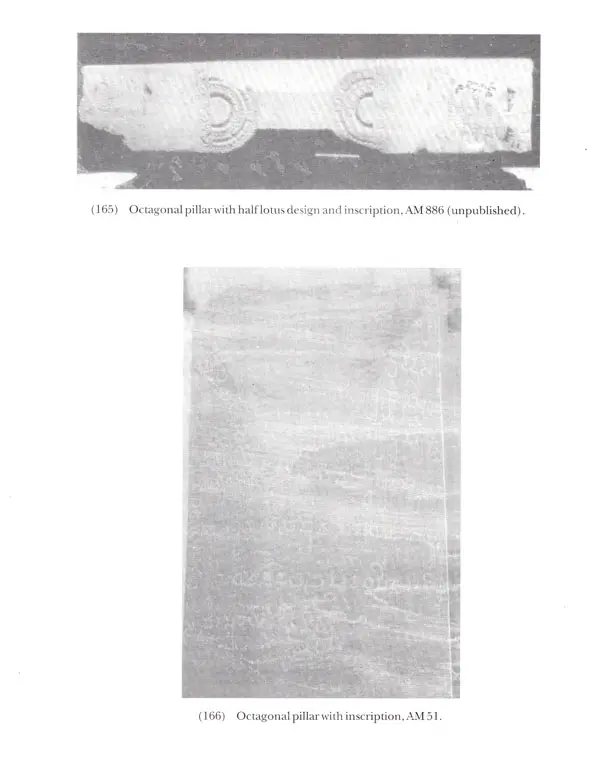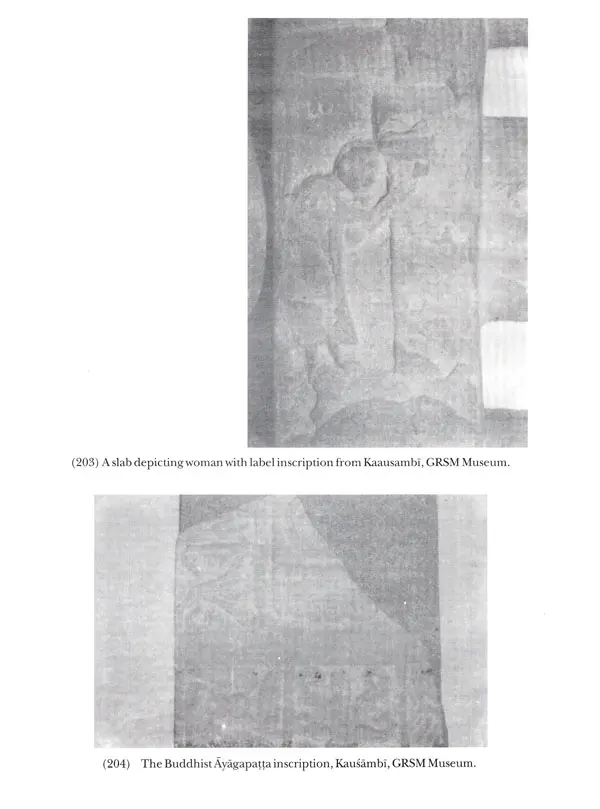
Amaravati Stupa (A Critical Comparison of Epigraphic, Architectural and Sculptural Evidence) (Set of 2 Volumes)
Book Specification
| Item Code: | UAO975 |
| Author: | Anamika roy |
| Publisher: | Agam Kala Prakashan, Delhi |
| Language: | English |
| Edition: | 1994 |
| ISBN: | 8173200165 |
| Pages: | 379 (Throughout B/w Illustrations) |
| Cover: | HARDCOVER |
| Other Details | 11.00 X 9.00 inch |
| Weight | 1.74 kg |
Book Description
The book presents individual studies of the epigraphy, architecture and the sculpture of the Amaravati stupa followed by a com parative study of the evidence provided by each aspect. The epigraphic study throws light on the foundation of the stupa and its chronological development thereafter to be come a Mahastupa. A comparative analysis of inscriptions from Bhärhut to Sri Lanka pro vides us an insight into the circumstances which led to the development of the script.
This study has tried to understand the nature and causes of the development of the mature and late Amaravati styles, when the art flourished independently. The book sug gests that besides such features as an aes thetic urge, political stability, Indo-Roman trade and socio-economic circumstances, different sects of Buddhism made a substantial contribution towards this artistic flowering.
It traces the different stages of growth of the stupa and also provides an analysis of their relationship to subsequent embellishment with relief sculptures and inscriptions. It also presents an analysis of some distinct architectural features of the Mahacaitya.
The conclusion is based on the testimony of all three aspects. It analyses what may have been the reason for harmony, dishar mony, embellishment and modification through the ages. The book also provides a list of the inscriptions scattered in the differ ent museums alongwith their museum numbers with a reference to the previous publications.
The author Dr. Anamika Roy comes from a family of renowned indologists. She has had an outstanding academic career and has to her credit more than a dozen medals in duding Chancellor's bronze, silver and gold medals for the best allrounder student of Allahabad University. She did her D. Phil on epigraphy from the University of Allahabad. Later she was sponsored by the Association of the Commonwealth Universities for a doc toral programme at Cambridge University. She was awarded Ph.D. from the University of Cambridge in 1991 on her work on Amaravati stupa. She is a fellow of Royal Asiatic Society, London and currently she is teaching in the Department of Ancient His-. tory, Culture & Archaeology at Allahabad University. Dr. Roy has contributed a good number of research papers to various reputed Journals.
(The city of Dha nyakataka is more beautiful than the city of gods. At this place Sambhu Amaresvara is worshipped and the worshippers give donations to the elongated and well embellished caitya of the Buddha).
This is the last Indian epigraphical reference (12th century A.D.) to the Mahá caitya (pl 179). The first epigraphical testimony is on a stela of the early 2nd century B.C. (pl. 38) Dhankada vandana mago ca (the way to worship Dhanakada or Dha nyakataka). The history of the Mahá caitya extends over these fourteen hundred years, but these Inscriptions do not mark the beginning and the end of the stúpa. The monument was apparently still in a highly decorated condition (Nana citra Sucirritam) in the 12th century A.D. and the sculpture on the stela records the superstructure of a well established monument.
Amaravatt is the modern name of the famous ancient town of Dha nyakataka. It is situated on the bank of the river Krisna, about 21 miles from the city of Guntur. On the western outskirts of the ancient city of Dha nyakataka lies the small village of Dharanikota. The remains of a brick wall around Dharanikota signal its importance in ancient times. During the late 18th century A.D., the local Zamindar, Raja Vasireddy Venkata dri Naidu, built his palace using the material of the Maha caitya, and called it Vaijayanıt Mahal. Vaijayant! is also the name of the palace of Indra, the king of the gods, whose capital was Amara vat! Eventually, this place also came to be known as Amaravatt eclipsing the earlier name of Dha nyakataka, but inheriting its history.
1.1 Geographical Setting
The ancient town of Dha nyakataka is claimed to be one of the thirty fortified towns of Andhra Pradesh. Its geographical position helped the settlement to grow into a prosperous town, for it is situated in the fertile delta of the Krisna. The abundant irrigation yielded agricultural products such as rice and cotton, justifying its name Dha nyakataka (town of paddy).Book's Contents and Sample Pages
